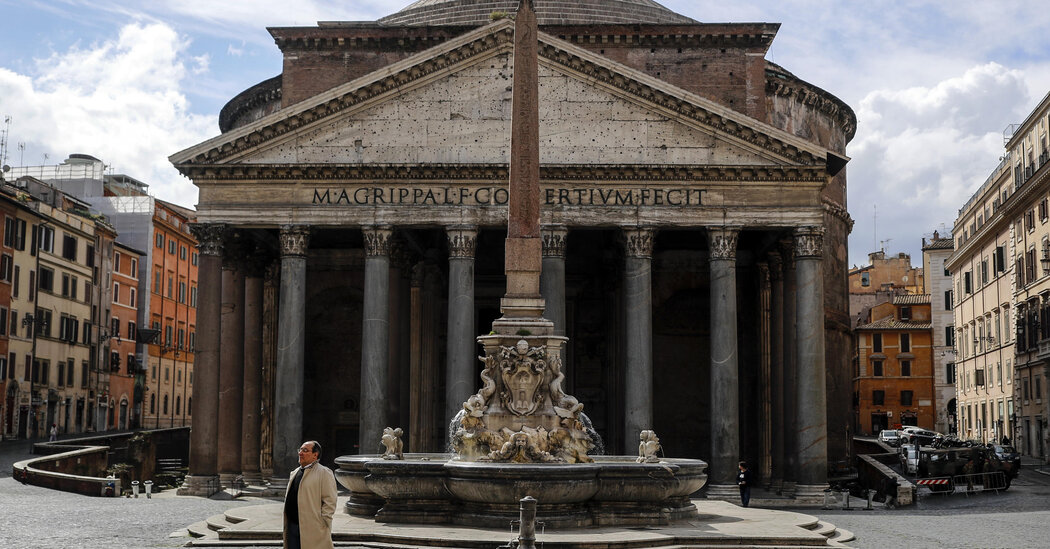By learning the secrets of 2,000-year-old cement, researchers are trying to devise greener, more durable modern options.
In June, the Italian Ministry of Culture announced the excavation of a new room, not yet open to the public, in the ruins of Pompeii. A few weeks later, a group of archaeologists gathered to marvel at it: walls covered with bright blue paint — an expensive pigment reserved for special rooms — and detailed frescoes of agricultural images remarkably well preserved after almost 2,000 years.
Admir Masic, a chemist at M.I.T., was more captivated by what appeared, to an unschooled guest, like an unremarkable pile of sandy dirt at the edge of the room. The material, light tan and granular, had been a critical component of the Roman Empire, he said: the precursor to concrete, a mainstay of Roman infrastructure, including the aqueducts that brought fresh water to cities like Pompeii.
“They managed to bring water to the city, and with water came hygiene,” Dr. Masic said. “That technological advance allowed them to, first of all, build Rome as it is, but also replicate this anywhere they would go.” He spread his arms as if circumscribing the entire Roman world.
Modern concrete, based on a material known as Portland cement, was developed in England in the 19th century and is the world’s most popular building material by far. It is cheap, strong and standardized, providing engineers everywhere with an easy material for building apartments, dams, skyscrapers and more. But it is much less resilient than the concrete used in Roman times; over the course of decades, it develops cracks that, by letting water in, can eventually destroy the material.
Moreover, the manufacture of concrete is a major driver of climate change, producing 8 percent of carbon dioxide emissions worldwide. By learning the secrets of Roman concrete, researchers like Dr. Masic are trying to devise greener, more durable modern options.
“Roman marine concretes have survived in one of the most aggressive environments on Earth with no maintenance at all,” said Marie Jackson, a geologist at the University of Utah.
